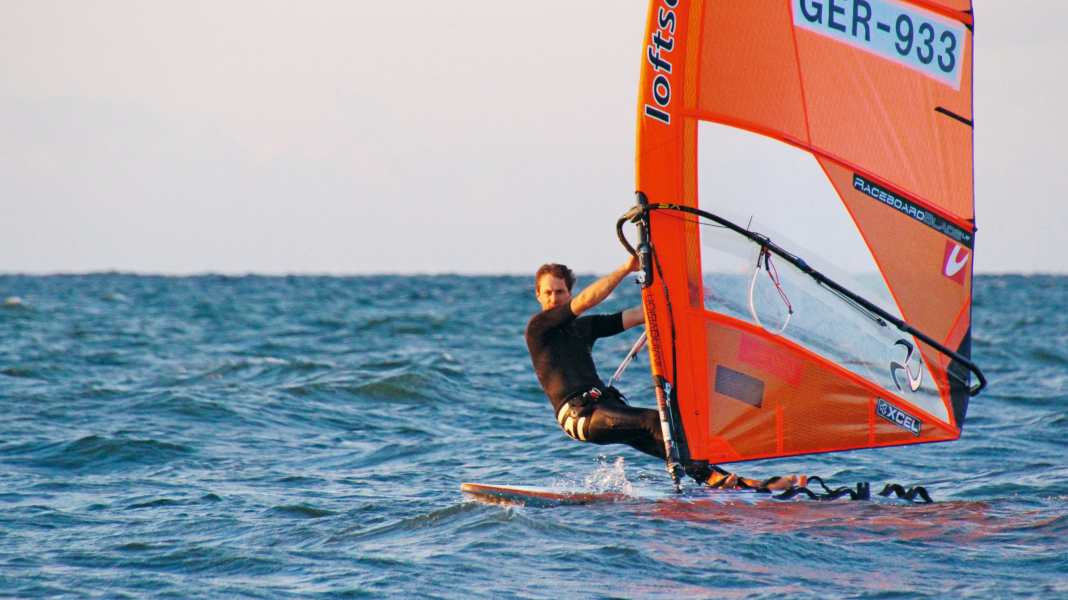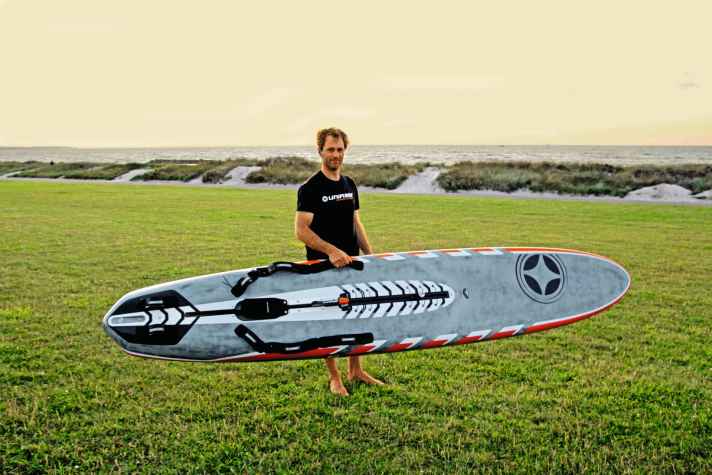
Innovations in the raceboard segment are rather rare - the majority of racers use the tried and tested Starboard Phantom, but also classics from Exocet or the good old Mistral Equipe II. Now Unifiber is surprising even die-hard racers with the new Proteus.
Fabian, you've recently started riding Unifiber boards, a brand that was previously completely unknown in the raceboard segment. How did the cooperation come about?
Louis Morris made life really difficult for us at the International German Championships at Steinhuder Meer, as he was travelling on the new board. In the end, he won the event ahead of Andre Hartung and me and I was able to take a closer look at the board. As the shape and some of the details really impressed me and I wanted to ride the board, I made an enquiry - and was promptly invited to join the international Unifiber team. Rumours were already doing the rounds last autumn that Unifiber wanted to launch its own concept on the market, but we were all surprised that it happened so quickly.
You mentioned the features of the board. What is important to you and how does the board differ from established models?
There are certain components on a raceboard that are subject to high loads. These include, for example, the rollers and the pedal of the mast track, which often give up the ghost. The centreboard lips also wear out quickly, causing the water to be drawn into the centreboard box from below - which slows you down. It has not been possible to replace these on many boards to date. With the Unifiber Proteus, a lot of attention has been paid to these details, and in my opinion the straps are also excellent. The pedal and rollers of the mast rail look very high quality, the centreboard lips can be unscrewed and easily replaced.

Does the board differ from other boards in terms of dimensions?
The Proteus is 3.68 metres long and 68 centimetres narrow, making it very close in length and width to the Starboard Phantom L, which, together with the slightly smaller Phantom model, is estimated to be used by 80 percent of racers. With a volume of 318 litres, it is slightly "smaller" than the Phantom L, and the weight of just 13.8 kilos is also extremely competitive, which is of course also a result of the full carbon construction.
You've already ridden the board. What was your first impression?
Positive throughout. The board feels light and I particularly liked the fact that it doesn't come into the waves as hard due to the rounder edges at the front of the board. On the cross, this means that I can ride the mast foot far forward without constantly getting the edge of the board caught in the choop. The rounder rails are also a big plus when jibing. The light and medium wind characteristics are of course of particular interest, but we'll have to do some comparison rides first.
Where is the board priced?
The Proteus costs 3195 euros, which is a whole lot less than some other race boards on the market. The price does not include a fin, but does include a board bag and the mast base.
Info under www.unifiber.net
